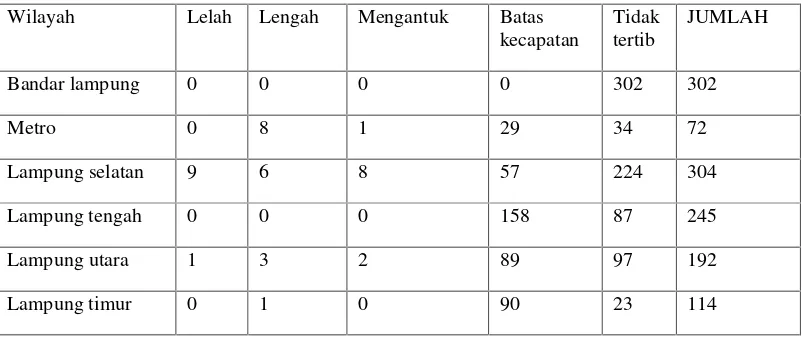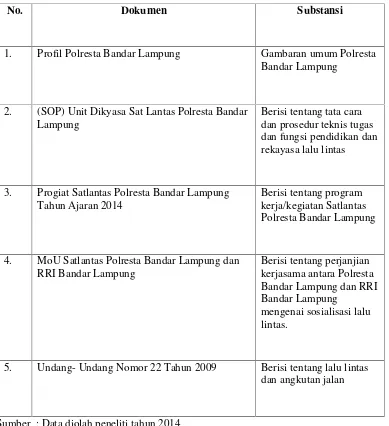I. Introduction: Background and Problem Statement
This thesis, "Implementasi Program Safety Riding Satlantas Polresta Bandar Lampung Tahun 2014," by Lica Chintya, investigates the implementation of a safety riding program by the Bandar Lampung Police Traffic Unit in 2014. The study is motivated by the high number of motorcycle accidents in Bandar Lampung, primarily attributed to traffic violations. This highlights a significant lack of public awareness regarding traffic regulations. The research aims to describe the program's implementation using George Edward III's implementation model, focusing on communication, resources, disposition, and bureaucratic structure. The methodology employs a descriptive qualitative approach, utilizing in-depth interviews, documentation, and observation. The high rate of accidents and violations underscores the crucial need for effective traffic safety education and its impact on achieving educational objectives related to responsible road usage.
II. Literature Review: Theoretical Framework and Relevant Concepts
The study grounds its analysis in George Edward III's implementation model, which posits that effective policy implementation hinges on four key indicators: communication, resources, disposition, and bureaucratic structure. The author reviews existing literature on public policy implementation, focusing on various models and their applicability to the context of traffic safety programs. The review encompasses definitions of public policy and its implementation, exploring the complexities of translating policy goals into effective action. The relevant sections also establish the theoretical basis for assessing the program's success based on the identified indicators, creating a framework for analyzing the program's effectiveness within the broader context of road safety initiatives.
III. Research Methodology: Design, Data Collection, and Analysis
Chintya employs a descriptive qualitative research design to analyze the Bandar Lampung Police's safety riding program. Data collection methods include in-depth interviews with key informants (police officers, program participants, etc.), documentary analysis (official reports, program materials), and direct observation of program activities. The qualitative approach allows for a rich understanding of the program's dynamics and challenges. Data analysis involves interpreting the collected data within the framework of George Edward III's model, assessing the program's effectiveness based on the four key indicators. The use of multiple data sources strengthens the study's validity and reliability, offering a more holistic view of the program's implementation.
IV. Overview of the Research Site: Bandar Lampung Police Traffic Unit
This section provides contextual background on the Bandar Lampung Police Traffic Unit, the implementing agency of the safety riding program. It describes the unit's organizational structure, its role within the broader police force, its resources, and its stated goals and objectives. The description clarifies the unit's capacity to implement the program effectively. This section provides crucial context for understanding the resource constraints and the bureaucratic structures that might affect program implementation, making explicit connections to Edward's framework.
V. Results and Discussion: Findings and Interpretations
This section presents the main findings of the study, organized around the four indicators of Edward's model. It presents data on communication effectiveness (transmission, clarity, consistency), resource availability (human resources, information, authority, facilities), disposition (attitudes and commitment of program personnel), and bureaucratic structure (existence of SOPs and fragmentation). The findings indicate that several shortcomings hindered the program's success. Specifically, insufficient human resources, absence of SOPs, and inconsistencies in communication processes are highlighted as critical factors contributing to the program's suboptimal implementation.
5.1 Communication
This subsection analyzes the communication aspects of the safety riding program, focusing on transmission (how effectively the program's message was disseminated), clarity (how well the program's objectives and procedures were understood), and consistency (the extent to which messaging remained consistent over time). The analysis would likely reveal challenges in effectively communicating safety guidelines to the diverse target audience, leading to a lack of awareness and understanding of the program's goals and procedures. This is critical in evaluating the program's overall effectiveness.
5.2 Resources
This subsection examines the resources available for program implementation, including human resources (number and training of personnel), information (availability of relevant data and materials), authority (powers granted to program implementers), and facilities (equipment and infrastructure). It would likely highlight the shortage of trained personnel and a lack of dedicated resources as major constraints affecting the program's outreach and impact, aligning directly with Edward's framework of resource assessment. The inadequate resource allocation likely affected communication, training, and overall program delivery.
5.3 Disposition
This subsection analyzes the attitudes and commitment of program personnel toward the safety riding program. It would evaluate their motivation, dedication, and belief in the program's goals. The analysis will assess whether personnel actively supported program implementation and whether their commitment positively impacted the program’s efficacy. A positive disposition is crucial for successful implementation, and its absence could directly impede achieving the program's educational objectives.
5.4 Bureaucratic Structure
This subsection evaluates the bureaucratic structure's role in the program's implementation. It focuses on the existence of Standard Operating Procedures (SOPs) to guide program activities and assess the extent of fragmentation (whether program responsibilities were effectively coordinated among different units). The absence of formal SOPs and potential bureaucratic fragmentation likely created confusion and inefficiencies, highlighting the importance of well-defined processes and coordination for effective policy implementation and achieving the desired educational impact.
VI. Conclusion and Recommendations
The conclusion summarizes the key findings of the study, reiterating the challenges faced in implementing the safety riding program and the reasons for its suboptimal performance. It emphasizes the critical role of human resources, effective communication strategies, and robust bureaucratic structures in ensuring successful implementation. Recommendations focus on practical steps to improve program effectiveness, such as increasing personnel, developing comprehensive SOPs, enhancing communication channels, and fostering a more collaborative approach among relevant stakeholders. These recommendations are crucial for refining the program's educational goals and better achieving its intended impact on road safety.






